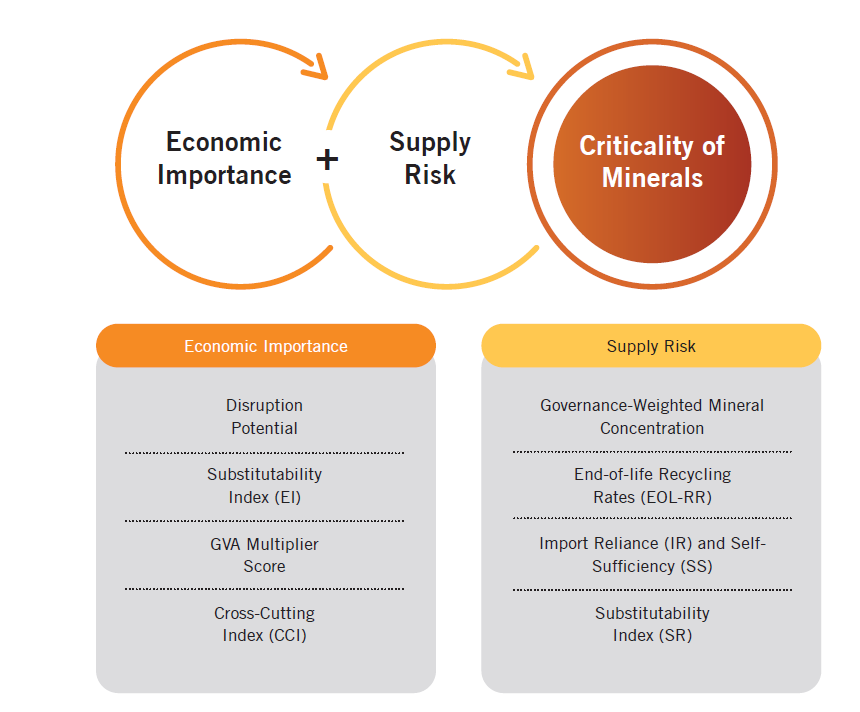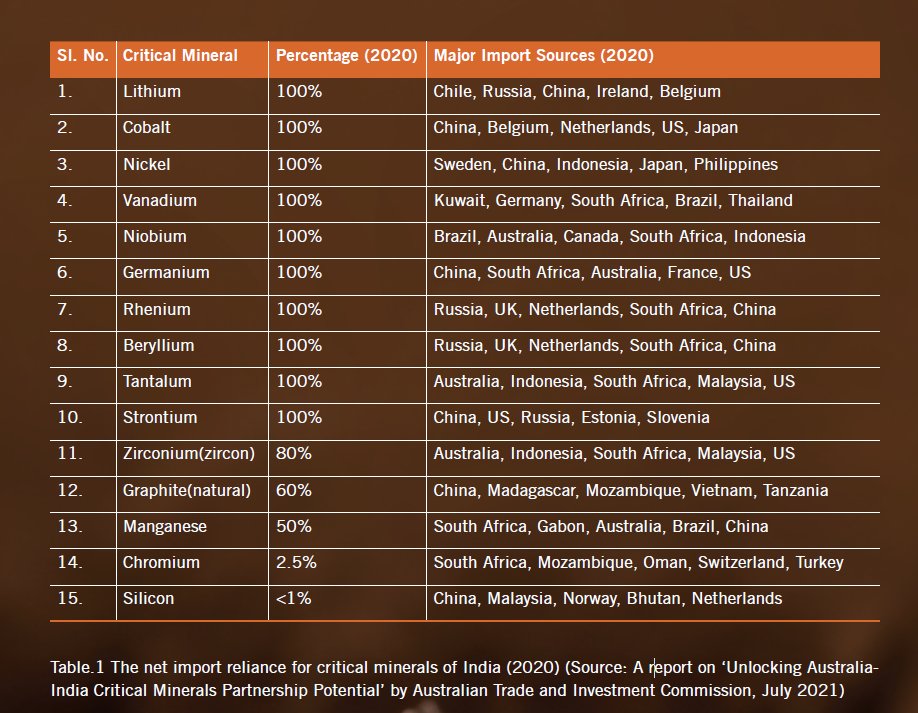Indian Economy
Critical Minerals
- 09 Dec 2023
- 7 min read
For Prelims: Critical Minerals, Mining Sector, Rare Earth Metals, Mines and Minerals (Development and Regulation) Act, 1957, Geological Survey of India (GSI), Mineral Security Partnership.
For Mains: Critical Minerals, Significance of Critical Minerals for India, Mineral Distribution in India.
Why in News?
Recently, Government of India has made a significant move in the Mining Sector by launching the first-ever auction of critical minerals, offering 20 blocks for sale to Private Sectors.
What are the Key Features of the First Auction of Critical Minerals?
- This is the first time that rights related to the mining of lithium ore are being auctioned to private sectors. Other minerals in the blocks include nickel, copper, molybdenum, and rare earth elements (REEs).
- The mineral blocks are spread across eight states, with Tamil Nadu having the most blocks (seven). Rights for these blocks vary; four blocks are auctioned for Mining Licences (ML), enabling immediate mining operations, while the remaining 16 blocks are auctioned for Composite Licences (CL), allowing geological exploration before mining.
What is the Background of the First Auction of Critical Minerals?
- The ongoing auction follows the government's declaration of 30 minerals as "critical" and amendments to mining laws.
- In July 2023, the government identified 30 minerals as Critical Minerals by amending the Mines and Minerals (Development and Regulation) Act, 1957, through the MMDR Amendment Act, 2023, empowering the Central Government to auction blocks of these minerals.
- The 30 critical minerals are Antimony, Beryllium, Bismuth, Cobalt, Copper, Gallium, Germanium, Graphite, Hafnium, Indium, Lithium, Molybdenum, Niobium, Nickel, PGE, Phosphorous, Potash, REE, Rhenium, Silicon, Strontium, Tantalum, Tellurium, Tin, Titanium, Tungsten, Vanadium, Zirconium, Selenium and Cadmium.
- The bidding is based on the highest percentage of mineral dispatch value quoted by bidders. Post this auction, a second tranche of critical mineral block auctions is anticipated.
- The Geological Survey of India (GSI) is actively exploring critical mineral reserves across the country.
What are Critical Minerals?
- Critical Minerals:
- Critical minerals are those minerals that are essential for economic development and national security, the lack of availability of these minerals or concentration of extraction or processing in a few geographical locations may lead to supply chain vulnerabilities and even disruption of supplies.
- Declaration of Critical Minerals:
- It is a dynamic process, and it can evolve over time as new technologies, market dynamics, and geopolitical considerations emerge.
- Different countries may have their own unique lists of critical minerals based on their specific circumstances and priorities.
- The US has declared 50 minerals critical in light of their role in national security or economic development.
- Japan has identified a set of 31 minerals as critical for their economy.
- The UK considers 18 minerals critical, EU (34) and Canada (31).
What is the Significance of Critical Minerals for India?
- Economic Development:
- Industries such as high-tech electronics, telecommunications, transport, and defense heavily rely on these minerals.
- Additionally, critical minerals are essential for green technologies like solar panels, wind turbines, batteries, and electric vehicles.
- Given India's significant domestic demand and potential in these sectors, their growth can lead to job creation, income generation, and innovation.
- National Security:
- These minerals are vital for defense, aerospace, nuclear, and space applications, necessitating the use of high-quality and reliable materials capable of withstanding extreme conditions and performing complex functions.
- Environmental Sustainability:
- They are integral to the transition toward clean energy and a low-carbon economy, enabling the reduction of India's reliance on fossil fuels and greenhouse gas emissions.
- With a commitment to attaining 450 GW of renewable energy capacity by 2030, these minerals are essential for achieving India's green objectives.
What are the Challenges for India Related to Critical Minerals?
- Implications of the Russia-Ukraine Conflict:
- Russia is a significant producer of various critical minerals, while Ukraine possesses reserves of lithium, cobalt, graphite, and rare earth elements.
- The ongoing war between the two countries affects these critical mineral supply chains.
- Limited Domestic Reserves:
- India has limited reserves of critical minerals such as lithium, cobalt, and other rare earth elements.
- Most of these minerals are imported, making India heavily dependent on other countries for its supply. This reliance on imports can create vulnerability in terms of price fluctuations, geopolitical factors, and supply disruptions.
- India heavily relies on imports for critical minerals like lithium and nickel, with 100% import reliance for lithium and nickel, and 93% for copper.
- Increasing Demand for Minerals:
- The manufacturing of renewable energy technologies and the transition to electric vehicles necessitate larger quantities of minerals such as copper, manganese, zinc, lithium, cobalt, and rare earth elements.
Conclusion
- India has an opportunity to strengthen its international cooperation and partnerships through the strategic management of critical minerals. By participating in initiatives like the Mineral Security Partnership (MSP) led by the United States, India can contribute to the establishment of global critical mineral supply chains.
- Bilateral agreements with countries such as Australia, Canada, Japan, and South Africa can further enhance India's position in critical mineral exploration, development, processing, and trade.
UPSC Civil Services Examination Previous Year Question (PYQ)
Mains
Q. Despite India being one of the countries of Gondwanaland, its mining industry contributes much less to its Gross Domestic Product (GDP) in percentage. Discuss. (2021)
Q. “In spite of adverse environmental impact, coal mining is still inevitable for development”. Discuss. (2017)








